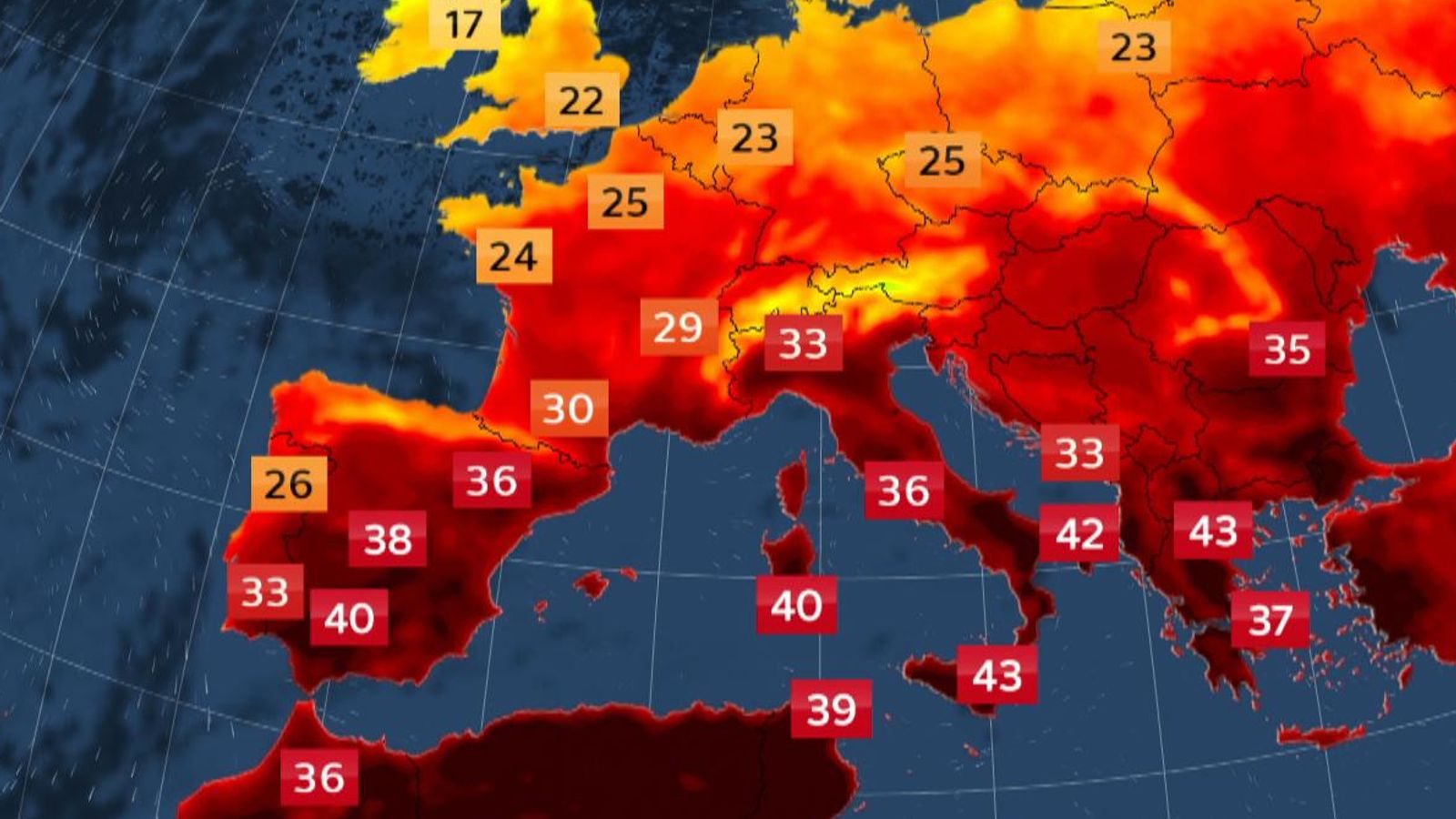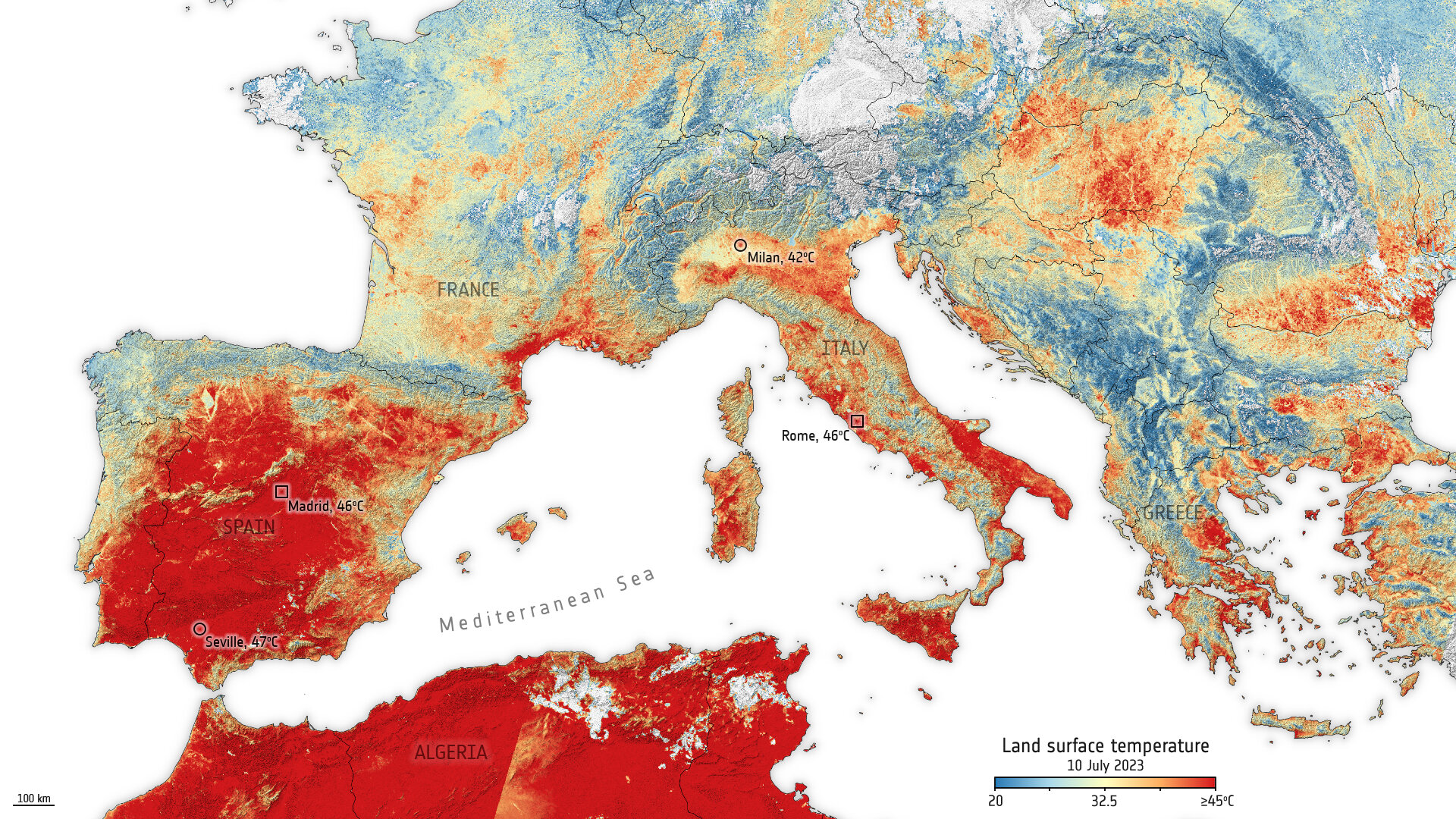Europe’s Devastating Heatwave: 2,300 Lives Lost and a Climate Crisis Unfolding

Europe Heatwave: 2,300 Dead – A Climate Catastrophe
In the summer of 2025, Europe was struck by one of the most intense heatwaves in recent history. With temperatures soaring to record highs, the heatwave claimed the lives of at least 2,300 people, many of whom were elderly, vulnerable, and already in poor health. This devastating natural disaster has sent shockwaves throughout the continent, prompting urgent calls for action on climate change, emergency preparedness, and public health strategies.

The Scorching Heatwave
In the heart of Europe, a heatwave unlike any seen before ravaged the region for days on end. From Spain in the west to Russia in the east, countries across the continent were gripped by oppressive heat. Cities like Madrid, Rome, and Paris experienced temperatures that shattered records, reaching highs of 45°C (113°F) in many areas, while some rural regions were even hotter.
The intense heat began to take a toll on public infrastructure, with power grids overloaded by the surge in demand for air conditioning, and water supplies dwindling as reservoirs were drained at alarming rates. As the heatwave persisted, hospitals and emergency services struggled to cope with the overwhelming number of heatstroke victims.
The Victims: Lives Lost and Families Devastated
As the body count continued to rise, the human cost of the heatwave became painfully clear. Of the 2,300 lives lost, the majority were elderly individuals who did not have access to air-conditioned environments or those living in poorly insulated homes. Many of these victims were already at high risk due to underlying health conditions, but the extreme heat proved to be a fatal trigger.
For families and communities across Europe, the heatwave’s aftermath left deep emotional scars. Parents and children mourned the loss of loved ones, while emergency workers and healthcare professionals found themselves overwhelmed by the crisis. The event highlighted the need for stronger climate adaptation measures, as well as a renewed focus on protecting the most vulnerable members of society.

Climate Change: A Driving Force
Experts agree that the intensity and frequency of heatwaves like the one experienced in Europe in 2025 are directly linked to climate change. Rising global temperatures have already caused shifts in weather patterns, leading to more extreme heat events, droughts, and storms. Europe, which has historically enjoyed a temperate climate, is now facing the consequences of a changing world.
The European heatwave serves as a stark reminder that climate change is not a distant threat but a present-day reality. If left unchecked, the planet’s rising temperatures will continue to worsen, making future heatwaves more deadly and harder to manage. The impacts of these events are not just physical; they also have economic, social, and psychological consequences.
Governments and Emergency Response
In the aftermath of the 2025 heatwave, European governments have been under pressure to respond effectively. Authorities have deployed emergency teams to assist with the immediate aftermath, setting up temporary cooling centers, distributing water, and providing medical care to those affected by the heat. Many countries have also taken steps to provide temporary financial aid to families who lost loved ones or whose homes were damaged by the heat.
However, many argue that the response has been insufficient given the scale of the disaster. While emergency measures helped mitigate the worst impacts, there is an increasing demand for long-term strategies to deal with the effects of extreme weather events. Urban planning needs to prioritize the creation of heat-resistant infrastructure, while health systems must be equipped to handle future heatwaves.
The Path Forward: Climate Action and Adaptation
As Europe recovers from the heatwave, it is clear that the need for climate action is more urgent than ever. Experts stress that the region must accelerate its efforts to reduce greenhouse gas emissions, transition to renewable energy, and implement adaptation measures to protect populations from future heat-related disasters.
The European Union, along with national governments, has pledged to make climate resilience a key priority. Efforts to improve early warning systems, create heat action plans, and build more climate-resilient cities will be critical in the coming years. Meanwhile, policymakers must focus on sustainable urban development, ensuring that buildings, infrastructure, and green spaces are designed to mitigate the effects of extreme heat.
At the same time, European leaders must take a global stance on climate change, advocating for international agreements that limit carbon emissions and promote sustainable practices worldwide. With heatwaves expected to become more frequent and intense, Europe’s response will set the stage for how the world addresses climate change moving forward.
Conclusion
The 2025 heatwave has tragically claimed thousands of lives and left Europe grappling with the realities of a changing climate. The loss of 2,300 lives is a stark reminder that climate change is not just an environmental issue but a public health and humanitarian crisis. As the continent mourns its dead, it is also confronted with the urgent need for action.
The road to recovery will require significant changes at every level of society. Governments, businesses, and individuals must all play their part in fighting climate change and protecting vulnerable communities. Only by taking decisive action now can Europe hope to prevent similar tragedies in the future and build a more resilient world for generations to come.













